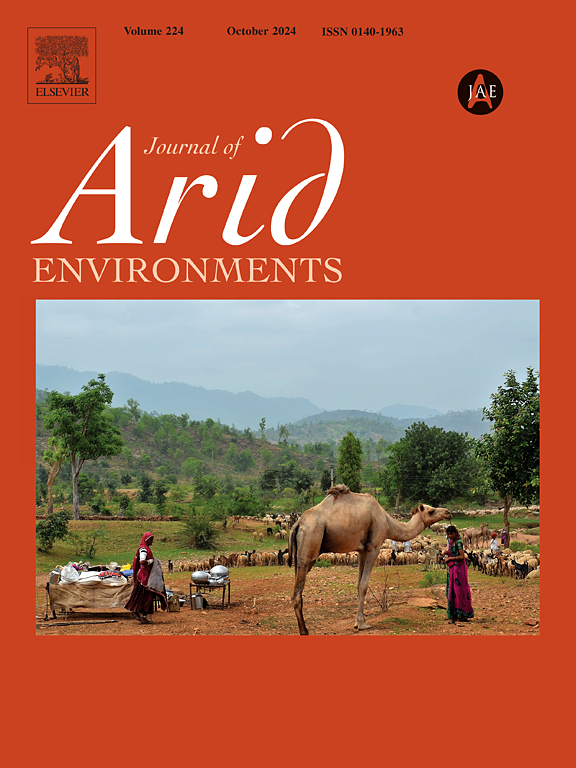剂量依赖的木麻黄根系表型可塑性:沿海固沙造林干旱适应策略的机制见解
IF 2.5
3区 环境科学与生态学
Q2 ECOLOGY
引用次数: 0
摘要
由于沙质土壤的干旱胁迫,中国1.7万公里的沿海防护林系统面临着自然更新方面的挑战,尤其是对稳定这些脆弱地带至关重要的先锋物种木麻黄(Casualina equisetifolia)的影响。对干旱导致的种群减少的有限理解阻碍了有效的保护策略。为了解决这一问题,我们采用聚乙二醇(PEG-6000)模拟干旱胁迫,对1年生的马叶松幼苗进行盆栽试验,分析根系生物量、形态和解剖结构。我们的研究结果揭示了剂量依赖性干旱反应在马叶松根。中度水分亏缺通过加速伸长促进根系生物量,而严重胁迫导致生物量减少62%。在形态上,幼苗增加了根表面积(↑34%)和组织密度(↑18%),但减少了总长度(↓27%),亚毫米根(0-0.5 mm直径)扩大了2.3倍,以优化土壤探测。解剖学上,初生根表现出干旱超敏性,木质部导管数量减少41%,而三生根通过血管密度增加(↑22%)和皮质细胞扩张来补偿。这些适应性策略为提高沿海造林项目中幼苗的抗灾能力提供了机制框架,为提高马叶松在干旱易感环境中的生存和适应能力提供了造林方面的见解。本文章由计算机程序翻译,如有差异,请以英文原文为准。

Dose-dependent root phenotypic plasticity in Casuarina equisetifolia: Mechanistic insights into drought adaptation strategies for coastal sand-fixation afforestation
China's 17,000 km coastal shelterbelt system faces challenges in natural regeneration due to drought stress in sandy soils, particularly affecting the pioneer species Casualina equisetifolia, crucial for stabilizing these vulnerable zones. Limited understanding of drought-induced population declines hampers effective conservation strategies. To address this, we conducted pot experiments on one-year-old C. equisetifolia seedlings using polyethylene glycol (PEG-6000) to simulate drought stress, analyzing root biomass, morphology, and anatomy. Our findings reveal dose-dependent drought responses in C. equisetifolia roots. Moderate water deficit boosts root biomass through accelerated elongation, while severe stress causes a 62 % biomass reduction. Morphologically, seedlings increase root surface area (↑34 %) and tissue density (↑18 %) but reduce total length (↓27 %), with a 2.3-fold expansion of submillimeter roots (0–0.5 mm diameter) to optimize soil exploration. Anatomically, primary roots show drought hypersensitivity with a 41 % reduction in xylem conduit numbers, whereas tertiary roots compensate through increased vessel density (↑22 %) and cortical cell expansion. These adaptive strategies provide a mechanistic framework for enhancing seedling resilience in coastal afforestation programs, offering silvicultural insights for improving the survival and adaptation of C. equisetifolia in drought-prone environments.
求助全文
通过发布文献求助,成功后即可免费获取论文全文。
去求助
来源期刊

Journal of Arid Environments
环境科学-环境科学
CiteScore
5.70
自引率
3.70%
发文量
144
审稿时长
55 days
期刊介绍:
The Journal of Arid Environments is an international journal publishing original scientific and technical research articles on physical, biological and cultural aspects of arid, semi-arid, and desert environments. As a forum of multi-disciplinary and interdisciplinary dialogue it addresses research on all aspects of arid environments and their past, present and future use.
 求助内容:
求助内容: 应助结果提醒方式:
应助结果提醒方式:


